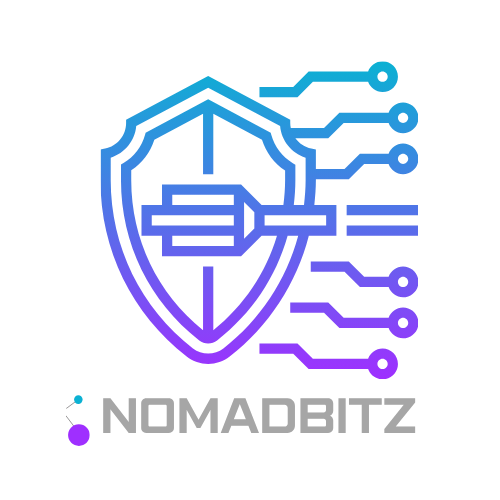Anúncios
Leadership examples show why 2025 demands new habits: hybrid teams, AI at work, and shifting employee expectations mean daily practices trump titles.
You will get practical, research-informed guidance that you can test in your company without promises of guaranteed outcomes. This piece frames leadership as a set of behaviors and decisions a leader uses with a team in changing conditions.
Trust and clear communication are now central to a healthy workplace across distance and time zones. Expect to flex styles—transformational, participative, authoritative, transactional, and servant—while prioritizing agility.
Run small experiments, measure signals like engagement and cycle times, and iterate for steady growth. Read on to reflect, try one idea at a time, and build momentum with clear vision and measured progress.
Introduction: why 2025 demands a fresh look at leadership
Teams now look for consistent, day-to-day behaviors that build trust, not status alone. In a hybrid, AI-enabled workplace, your actions—how you set goals, follow up, and show empathy—shape culture more than a title.
Anúncios
From titles to trust: you can create influence by modeling transparency and accountability. Practical rituals like short written agreements after meetings and regular one-on-ones reduce confusion and raise morale across teams and the broader workplace.
How hybrid, AI, and shifting expectations reshape your role: AI changes planning and decision support, but values and culture stay human choices. As leaders, you balance tools with conversations that center people. Change is constant; adapt your style, show empathy, and prioritize clear communication.
- Define goals transparently so members and team members know priorities.
- Pair quick tips with supportive behaviors: behavior-focused feedback and timely check-ins.
- Run small tests, measure trust and cycle time, then iterate.
Use this guide as a practical resource. Pick one or two things to test in your company, measure the outcomes, and adjust. For broader trends and research-informed ideas, see top trends for 2025.
Anúncios
Leadership agility over a single style
A flexible approach to how you lead helps teams move faster and stay resilient.
Define agility: treat agility as the ability to pick the right style for the moment. Draw from transformational, participative, and authoritative approaches so your team has inspiration, shared input, or clear direction when they need it.
When to switch: use a participative stance to co-design goals with experienced groups. Go authoritative when a new vision needs clarity. Choose delegative when skilled people own well-defined tasks.
Situational switches
Hands-on beats delegative during onboarding, crises, or high-risk launches. Step back when people have the ability, context, and skills to own outcomes.
Try-this-now: two-week style swap
Pick one meeting type or short project. Intentionally change your style for two weeks. After each session, run a 3-question pulse: Did the goal feel clear? Was participation fair? What one change would help?
- Run a quick 360 check with peers and the team to compare intent and experience.
- Write a one-page style map listing situations, teams, and tasks that call for each style.
- Keep core values steady to avoid overcorrecting.
Small tests reduce risk. Use evidence to refine your approach and support learning and development across your organizations.
Communication and trust as daily practices
Daily communication choices shape whether your team trusts processes or gets stuck in confusion.
Make small habits your testable process: end meetings with a short written agreement that lists who owns tasks, due dates, and how progress will be shared. This cuts rework and raises clarity at every level.
Clarity beats noise: short written agreements after meetings
Try this after every meeting: write one sentence of agreed outcomes, name the owner, and set a due date. Share notes within 24 hours and ask one member to confirm next steps.
Feedback that sticks: focus on behavior, not the person
Use behavior-focused feedback to keep trust intact. For example: “I noticed the report was late—how can we adjust your process to hit deadlines?”
Cadence that scales: one‑on‑ones and team rituals that travel across time zones
Keep a simple cadence: weekly or biweekly one‑on‑ones and a 15-minute stand‑up for alignment. Record short video summaries, send action notes, and ask members to restate next steps to confirm understanding.
- Create a shared “working agreements” doc with response times and meeting etiquette so people know what good looks like.
- Feedback timing rubric: address small things within 24–48 hours; surface themes monthly; reserve quarterly sessions for growth topics.
- Track two signals: fewer clarifying messages after meetings and shorter cycle time from decision to delivery; iterate based on what you learn.
Trust compounds when you follow through and communicate delays early. Treat these habits as experiments: measure, adjust, and repeat to find what works for your team and workplace.
Inclusive and empathetic leadership in diverse, hybrid teams
Small, deliberate acts of inclusion shift how people experience work across hybrid teams. You can make belonging practical by testing simple habits and measuring results.
Micro-behaviors that build belonging
Rotate speaking order, name and credit employees for ideas, and invite quieter members to share when they are ready. These small moves increase trust and participation.
Addressing workload and well‑being without overpromising
Run short weekly pulse checks on workload and energy. Ask one clear question about capacity, then rebalance tasks where you can. Be specific when you model empathy: acknowledge limits, say what you can change now, and explain trade‑offs.
- Use inclusive communication: define acronyms, summarize decisions for asynchronous members, and offer text options.
- Make traits you value—respect, curiosity, and fairness—visible in rituals and rewards.
- Do an “access check” for meetings: materials available, cameras optional, and time zones considered; track participation patterns.
Try a four-week test: invite employee input via a short survey, co-create two changes, and review signals like engagement and cycle time. Small tests protect credibility and strengthen culture in your workplace.
Mentorship, coaching, and micro‑mentorship as growth engines
Have a simple routine that mixes formal mentoring with in‑the‑moment coaching. This makes development practical and continuous for your people.
Why it works: inspirational mentors matter—about 97% of people with mentors find the relationship valuable. Pair long‑view mentoring with short coaching nudges to keep momentum without overpromising results.
Formal mentors plus in‑the‑moment coaching
Formal mentors offer perspective across roles. Your role as a leader is to coach in the flow of work with timely, specific guidance and an example when needed.
Design a 30‑minute monthly growth loop
Use this agenda: wins, goals status, one obstacle, one skill to practice, and one exposure opportunity. Keep notes owned by the member and clarify support between sessions.
- Micro‑mentorship: 10‑minute reflections after meetings to name what worked and one tweak.
- Skills tracker: pick one skill per month, one practice rep per week, and review artifacts next session.
- Rotate members for short shadowing to gain cross‑function experience with low time cost.
Measure lightly: ask if confidence rose, if goals advanced, and whether new behavior appeared in work artifacts. Mentoring complements performance reviews but does not replace them.
Tech-enabled leadership: AI coaching, VR practice, and ethical guardrails
Technology now gives you safe rehearsal spaces to practice tough conversations before they happen.
AI as a coaching copilot: pair with an AI to surface reflection prompts about your style, recent decisions, and bias patterns. Use prompts to spot blind spots and to shape a short weekly routine.
Try this: a 10-minute weekly learning habit. Journal answers to two prompts, pick one behavior to test with your teams, and note results.
VR scenarios for negotiation and crisis practice
Rehearse conflict, negotiations, and crisis triage in VR. Run a simulation—say a budget cut with multiple stakeholders—and practice sequencing decisions and communication.
Debrief quickly: what to keep, what to change, and how confident you feel. VR builds skills without real harm.
Champion ethical AI and clear guardrails
Define your organization’s values, list acceptable use cases, and set a review process that keeps a human in the loop for sensitive calls.
- Ask how employee data is handled and what the company retains.
- Start small: pilot with one team, compare readiness and confidence against a control group.
- Use tech as practice solutions, not as a replacement for human judgment and accountability.
Participative decision-making that works in hybrid settings
Getting good decisions in a hybrid setting means structuring how people contribute and how you close the loop. Use clear rituals so remote and in‑office voices shape outcomes without slowing delivery.
Asynchronous input, synchronous convergence
Define a two‑step flow: gather asynchronous input in a shared doc with prompts, then meet briefly to converge and decide.
Keep the input window 24–48 hours so members in different time zones can contribute. Summarize comments before the live session.
Decision memos: who decides, by when, and why
Use a one‑page memo: who decides, deadline, top goals, options, trade‑offs, and assigned tasks. Share the memo before the meeting so the meeting focuses on choosing, not updating.
- Template for invites: purpose, desired outcome, pre‑reads, and two specific questions to answer.
- Time‑box input and give short feedback notes showing how contributions altered the decision.
- Start work with a simple RACI and revisit after two weeks to refine roles if blockers appear.
When to use participative style: choose it for complex, cross‑functional problems where diverse viewpoints improve solutions. Avoid it for urgent safety calls that need quick, authoritative action.
Track two signals: fewer decision reversals and faster handoffs from decision to execution. Run a short test, measure these signals, and iterate your process.
Results with humanity: balancing accountability and purpose
When you pair measurable routines with purpose, people meet goals and feel valued. Use clear, short checklists and progress trackers to set expectations. That gives teams the structure they need to deliver.
Use transactional tools without losing intrinsic motivation: link each goal to why it matters for the company, customers, or the wider workplace. Frame tasks as contributions to a shared purpose so employees see meaning, not just metrics.
Simple accountability move: if you miss a commitment, own it publicly, explain what changed, and name one concrete step you will take next time. Public ownership models the culture you want and keeps trust intact.
Celebrate learning, not just outcomes: run a 15‑minute after‑action review. Ask: what worked, what changed, and what to try next. Capture one lesson for development and one experiment to run before the next review.
- Pair feedback with growth: name one behavior to keep, one to improve, and one quick experiment.
- Combine clarity with autonomy: set the goals, let teams pick methods, and hold the line on outcomes and ethics.
- Track development metrics: progress toward goals, skill application in real work, and employees’ sense of meaning.
Keep it iterative: revisit norms quarterly, measure signals like on‑time delivery and trust, and adjust based on evidence rather than assumptions. That balance keeps leaders honest and people engaged as change unfolds.
Leadership examples shaping 2025
Six concise mini-cases show how top leaders turned vision into everyday moves you can test in your own company.
Mary Barra: transparency at scale
Barra used regular, clear updates and open channels to guide a large company through complex shifts.
Trait: transparency. Try: run a weekly one-paragraph update that names decisions, owners, and next steps.
Satya Nadella: empathy-led inclusion
Nadella paired empathy with high standards to raise performance while broadening participation across teams.
Trait: empathy. Try: add a 5‑minute empathy check in meetings: ask what support someone needs this sprint.
Indra Nooyi: transformative portfolio shifts
Nooyi framed portfolio change around healthier options and social responsibility to steer long-term direction.
Trait: transformation. Try: map one product or process to a clearer purpose and share the rationale publicly.
Tim Cook: ethics in supply and privacy
Cook clarifies company standards on privacy and supply chains so employees know the boundaries for decisions.
Trait: ethics. Try: publish a short accountable-use checklist for new initiatives.
Richard Branson: bold experimentation
Branson encourages initiative and fast tests across industries, keeping teams empowered to try new models.
Trait: boldness. Try: run a small “safe-to-fail” pilot with clear metrics and a short review window.
Feike Sijbesma: purpose-driven sustainability
Sijbesma reframed his organization around climate and nutrition, aligning strategy with societal need.
Trait: purpose. Try: pick one sustainability signal to track and report monthly to your team.
Use these leader moves as references, not templates. Outcomes vary by context, so test one idea at your level, measure signals, and adapt rather than copy wholesale.
Put trends into practice in your company
Turn trends into small, low‑risk experiments that your team can run this month. Pick one concrete change, define simple goals, and treat the work as a learning loop rather than a permanent policy.

Run small tests: one ritual, one tool, one behavior
Pick one ritual to test: a short written agreement after meetings, a weekly one‑on‑one, or a 30‑minute monthly growth loop.
Choose one tool to pilot: an AI coaching copilot for reflections or a lightweight VR scenario for practice. Select one behavior to practice as a leader: public accountability or inviting a quieter member to speak first.
Measure what matters: trust signals, engagement, and cycle times
Define clear metrics up front: follow‑through, fewer clarifying messages, participation rates, and time from decision to delivery.
Capture feedback quickly with a two‑question Friday pulse: what helped, what hindered, and one suggestion for next week.
Iterate with evidence: keep what works, adjust what doesn’t
Use a short decision memo and a simple RACI to clarify tasks and ownership. Revisit ownership after two weeks and update based on signals.
- Rotate an experiment captain so employees co‑own the test and build mentoring capacity.
- Keep what improved outcomes, stop what added noise, and refine promising ideas into ways of working.
- Frame this as practical tips, not guarantees—learn fast, measure lightly, and scale what moves the needle.
Conclusion
Wrap up with a simple commitment: try one small practice, measure the results, and adjust. Short tests reduce risk and speed useful change.
Daily behaviors make modern leadership real. Ask one or two leaders and team members to run a four‑week test, record what changed, and note next direction. Use micro‑mentorship and behavior‑focused feedback to keep learning active.
Model accountability and empathy, protect focus time, and mix asynchronous input with quick synchronous closes. This helps the workplace adapt without burnout and gives teams concrete ways to improve work.
Lead consciously, experiment safely, and iterate with your people so progress compounds and small wins point the direction to broader success.



